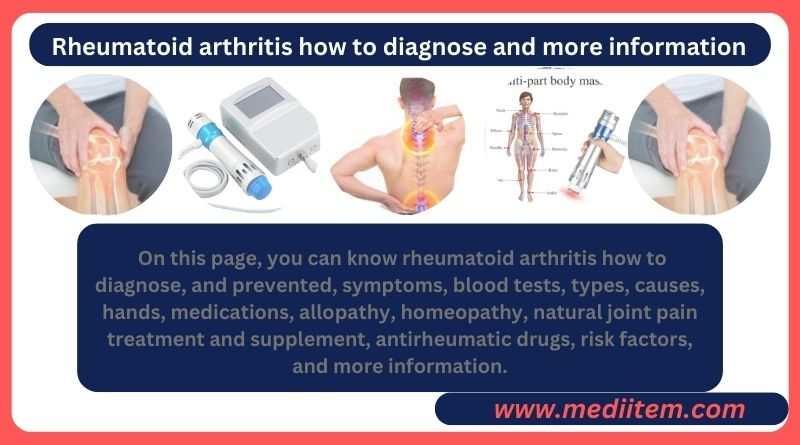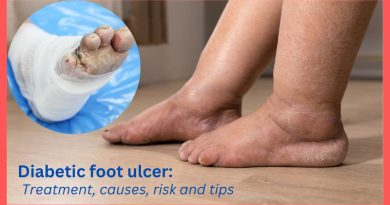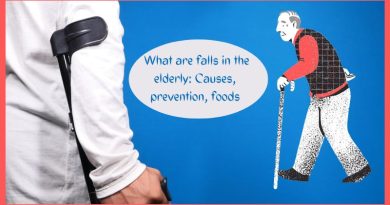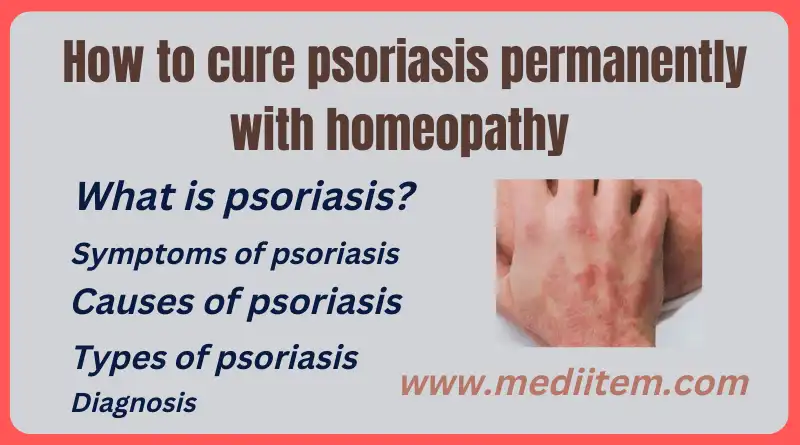Rheumatoid arthritis how to diagnose and more information
On this page, you can know rheumatoid arthritis how to diagnose and prevent it, symptoms, blood tests, types, causes, hands, medications, allopathy, homeopathy, natural joint pain treatment and supplement, antirheumatic drugs, risk factors, and more information.
Arthritis patients should be careful with their diet, as getting the right nutrients can positively affect health and help alleviate the symptoms of the disease.
Remember that being overweight increases inflammation. In addition, for every pound of excess weight, an additional four pounds of pressure is exerted on stiff, swollen joints. A healthy diet will help you lose weight and maintain healthy bones, joints, and tissues.
What is rheumatoid arthritis?
Arthritis is any inflammation at the joint level. In joints, the ends of the bones are covered by cartilage and all of it is closed by a tissue known as the synovium.
It is in this membrane that inflammation occurs in arthritis. In this way, destruction, instability, and deformity of the joint occur and, as a consequence, functional inability to perform daily tasks.
Arthritis can occur at any age, from childhood to adulthood.
When arthritis affects only one joint, it is called monoarthritis. If 2 or 3 joints are affected, it is known as oligoarthritis, and if 4 or more joints are affected, polyarthritis.
If the onset of inflammation has been sudden and recent, we speak of acute arthritis. if the symptoms persist for more than 3 months, it is called chronic arthritis.
According to Dr. Shaokat Ali, some patients with arthritis may present involvement of other organs and systems, including kidneys, lungs, nervous system, or skin.
In these patients, inflammation occurs in a generalized way in the joints and vital organs with the consequent deterioration of the patient’s health.
How is rheumatoid arthritis prevented?
The genetic predisposition to suffer from certain arthritis makes it difficult to determine the exact trigger of the disease and, therefore, its prevention is complicated.
Modifying environmental factors such as a healthy diet low in purines can prevent excess uric acid in the blood and, therefore, gouty arthritis, although an adequate diet may not always be enough to prevent its appearance and progression.
A diet rich in Omega 3 acids can be beneficial, due to its anti-inflammatory effect, in those patients who already know their diagnosis.
According to Dr. Shaokat ali, in recent years, multiple studies have revealed the role of smoking as a possible triggering factor in the onset, prognosis, and response to the treatment of inflammatory arthritis.
Rheumatoid arthritis with lupus:
External factors such as sunlight or certain medications can increase the activity of diseases such as systemic lupus erythematosus.
Rheumatoid arthritis how to diagnose
- Arthrocentesis with study and culture of synovial fluid
- Blood culture
- Usually complete blood count and erythrocyte sedimentation rate (or C-reactive protein)
- Molecular tests (PCR [polymerase chain reaction])
- In some cases diagnostic imaging studies
Infectious arthritis is suspected in patients with acute monoarticular or oligoarticular arthritis and those with other combinations of symptoms characteristic of particular infectious arthritis syndromes
(eg, polyarthritis migratory, tenosynovitis, and skin lesions typical of disseminated gonococcal infection; erythema migratory and other signs and symptoms of Lyme disease).
The presence of mild monoarticular or polyarticular symptoms should raise suspicion in patients on immunosuppressive therapy (eg, corticosteroids, TNF [tumor necrosis factor], or interleukin 6 inhibitors)
With risk factors (such as rheumatoid arthritis), with joint replacement, or an extra-articular infection that may spread to a joint (eg, genital gonococcal infection, pneumonia, bacteremia, anaerobic infection).
Generalized arthritis
The study of synovial fluid is the basis for rheumatoid arthritis how to diagnose acute joint infection. A macroscopic study is done and then a complete blood count with differential count, Gram stain, aerobic and anaerobic culture, and search for crystals.
Foul-smelling synovial fluid suggests anaerobic infection. Fluid from an acutely infected joint reveals a white blood cell count > 20,000/mcL (sometimes > 100,000/mcL) made up of > 95% polymorphonuclear cells.
The leukocyte count is higher in nongonococcal bacterial infectious arthritis than in gonococcal arthritis. In early or partially treated infections, the white blood cell count may be lower.
Gram stain reveals organisms in only 50–75% of joints with acute bacterial arthritis, often due to staphylococci. Positive Gram staining is suggestive, although culture is definitive.
The presence of crystals does not exclude coexistent infectious arthritis. Sometimes, the analysis of the synovial fluid does not allow the differentiation of infection from other inflammatory processes.
If this differentiation is not possible based on clinical symptoms or synovial fluid examination, infectious arthritis should be assumed until culture results are obtained.
Inoculation of synovial fluid into aerobic blood culture bottles may improve the detection of Kingella kingae.
Forecast
Acute nongonococcal bacterial arthritis can destroy articular cartilage and cause permanent damage to the joint over hours or days.
Gonococcal arthritis does not usually cause permanent damage to the joints. Factors that increase susceptibility to infectious arthritis may also increase the severity of the disease.
In patients with rheumatoid arthritis, the functional evolution is poor and the mortality rate is higher.
Rheumatoid arthritis how to diagnose with symptoms
The physical examination can confirm the presence of joint inflammation (joints that are swollen, hot, and sometimes even with the skin that covers them red).
Limitation of mobility is almost always detected, regardless of the cause. A comprehensive general examination can detect other key extra-articular signs to suspect a specific diagnosis,
such as skin psoriasis, ocular inflammation, or the presence of tophi (subcutaneous accumulations of uric acid).
Mobility of the hands:-
In the physical evaluation carried out by your doctor, you will see little mobility of the wrist and a lack of strength in the pincer movement of the hands.
In other words, the movements of your wrists can be compromised, which can prevent you, for example, from combing your hair due to the displacement of the wrist that it requires.
Likewise, you can present problems to grasp objects, for example: Take a toothbrush or a glass.
These daily activities are complicated because you do not have strength in the thumb and index finger that form the pincer of the hand.
According to a study at Lund University, the activities of your daily life that are affected by pain, inflammation, and stiffness are:
Tie the laces and putting on buttons
cutting food,
Bringing the cup to your mouth
Open car doors, and jars.
Close and open the tap.
First symptoms of rheumatoid arthritis
*The first symptoms of Rheumatoid Arthritis are usually mild and are associated with joint pain along with other ailments.
*It is important to detect them in time so that Rheumatoid Arthritis does not worsen or cause further damage.
Mild joint pain:
*Mild joint pain is usually an initial symptom of Rheumatoid Arthritis, generally occurring in the small joints of the feet and hands.
*A specific feature of the condition is its symmetry since it affects the same joint on both sides of the body.
*At first, they may feel sensitive, hot, and stiff if they are not used for a period of time, greater than an hour.
*In addition to the joints of the hands and feet, discomfort may appear in the wrists, knees, elbows, hips, shoulders, and the larynx area.
Inflammation:-
*Inflammation is another of the most frequent symptoms at the beginning of the disease, especially on the palmar side of the wrist.
*The inflammatory symptom can occur in all joints and can harm the tissues that cover them and other organs of the body if it is not treated in time.
Stiffness.
*Stiffness in the body can be an initial symptom and is characterized by appearing in the morning, also known as morning stiffness.
More possible symptoms:-
Often joint symptoms may be preceded by other manifestations in the body of the disease.
Some of them are:
- Trouble sleeping.
- Fatigue.
- General discomfort.
- Low self-esteem.
- Burning in feet and hands.
- Weight loss.
- Tingling.
- Fever.
Rheumatoid arthritis blood test
Analytical rheumatoid arthritis blood test results details
This clinical analysis allows us to corroborate or rule out a diagnosis, facilitate the monitoring of a disease, or assess the effectiveness of a treatment in rheumatic diseases.
To carry out this analysis it is necessary to perform a blood extraction.
ESR: To detect any inflammation or infection in the body.
Hemogram: (red blood cells or red blood cells, white blood cells or leukocytes, hemoglobin and leukocyte formula). For the prevention and detection of anemia and infections.
PCR: Highly relevant inflammatory marker.
R.F: Helps diagnose if the patient has rheumatoid arthritis. Rheumatoid Factor is a kind of antibody that responds to inflammation that is caused by arthritis.
Uric Acid: Prevention of gout attacks.
Antistreptolysins: Measures antibodies against streptolysin O, a substance produced by group A streptococcus bacteria.
Waaler Rose: It is an immunological test that is used to detect the presence of rheumatoid factor. The reaction is positive in patients with rheumatoid arthritis or certain collagen diseases.
Main blood test:
It is essential to determine the levels of different parameters: Rheumatoid Factor (RF), C-reactive protein (CRP), antibody against the citrullinated protein (ACPA), and erythrocyte sedimentation rate (ESR).
Rheumatoid factor: It is a protein produced by the immune system that is present in 70% of patients. It is not a differential parameter since it is also present in other rheumatic diseases.
Elevated values of rheumatoid factor are related to more severe symptoms and a worse prognosis of the disease.
C-reactive protein: It is a protein that is produced in response to inflammation, as is the case with Rheumatoid Arthritis.
It does not allow for establishing a differential diagnosis since it is also elevated in other types of Arthritis, other rheumatic diseases, and other clinical situations.
Antibody against the citrullinated protein (ACPA): They are present in more than 75% of patients and do not usually occur in other diseases.
Erythrocyte Sedimentation Rate (ESR): This is a test that measures how quickly red blood cells descend in a tube of blood over an hour. The ESR is an indicator of inflammation and is increased in 90% of patients with Rheumatoid Arthritis.
Radiological tests:
Radiological tests are necessary to assess the damage and deformity produced in the joints.
X-rays of the joints in which the presence of Rheumatoid Arthritis is suspected are usually performed. In addition, the hands and feet are also usually evaluated, since they usually present alterations even in the initial phases of the disease.
Sometimes a CT scan or MRI may be done.
Scales for the evaluation of rheumatoid arthritis activity
Types of rheumatoid arthritis
Arthritis is a chronic disease characterized by inflammation of one or more joints in the body and is made up of more than 100 rheumatic diseases.
Rheumatoid Arthritis is one of the most common types of arthritis. Other common types of arthritis are psoriatic arthritis, juvenile idiopathic arthritis, or osteoarthritis (also called osteoarthritis).
What does the result mean?
The RF test must be interpreted in conjunction with other laboratory tests, the symptoms reported by the patient, and the clinical history. RF is present in 70-90% of people with RA, although it is not diagnostic of the disease.
In people with signs or symptoms of RA, the presence of significant levels of RF indicates that they likely have RA. Generally, a high concentration of RF is correlated with greater severity and a worse prognosis of the disease.
A negative result does not rule out RA. Approximately 20% of people with RA do not present detectable RF values or present them at a very low concentration. In these cases, it may be necessary to determine the anti-CCP to confirm the disease.
There are different tools to assess the activity of RA
DAS28 Index: It is the most widely used tool to assess the disease and is calculated using a special calculator.
It takes into account the number of swollen joints, the number of tender joints (using the 28-joint count), ESR or C-reactive protein, and finally a general assessment of disease activity by the patient using the scale. visual analog.
The possible range of values goes from 0 to 9.4 and depending on the score obtained one can speak of remission, low, moderate, or high activity.
Simplified Disease Activity Index (SDAI): Takes into account the same joints and parameters as DAS28, but does not require a calculator. The possible range of values is from 0 to 86.
Clinical disease activity index (CDAI): It is an index similar to the previous ones, although C-reactive protein is not included in it. The possible range of values is from 0 to 76.
Causes of rheumatoid arthritis
In most cases, the reason for the appearance of arthritis is unknown; “Possibly, because there are so many different types of arthritis, there is also a multitude of different causes.
Once arthritis has been diagnosed, we have to give it the ‘last name’ because correct treatment depends on a specific diagnosis.
The differential diagnosis between one type and another is based on a correct clinical history and physical examination, since the clinical characteristics of presentation, its distribution,
the number of affected joints, and systemic manifestations such as fever, weight loss, skin lesions, etc. allow us to suspect the origin of the disease in each case.
Thus, many diseases can be associated with arthritis, but the most frequent is
Rheumatoid Arthritis: It is a polyarthritis that frequently affects the joints of the members (especially hands and feet) and less so those of the spine. It is usually bilateral and symmetrical, that is, it inflames the same joints on both sides of the body.
Microcrystalline arthritis, such as gout (due to the deposit of uric acid crystals in the joints): gout is caused by an excess of uric acid in the blood.
This disease appears due to the deposit of small microcrystals in the joints, causing inflammation. Inflammation of the joint of the big toe is characteristic, although it does not always appear and, in fact, it can affect any joint.
Gout disease is more common in women than in men. At first, this type of arthritis appears intermittently but, if not treated properly, it can progress and behave like chronic arthritis with a risk of joint destruction.
Ankylosing spondylitis: Ankylosing spondylitis is a chronic inflammatory disease that mainly affects the joints of the spine, which tend to weld together, causing limited mobility (hence the term ankylosing, which comes from the Greek ankylosis which means ” welding, fusion”).
It is a common disease, especially in the white race (0.5-1% of the population). It usually appears in men between 20 and 30 years of age. In women, it is less frequent and is usually milder.
Psoriatic arthritis: It is a joint disease that occurs in some patients with psoriasis, which gives it peculiar characteristics in terms of evaluation and prognosis.
It is a chronic disease that evolves irregularly throughout life, with periods of inactivity and periods of inflammation and pain.
Juvenile idiopathic arthritis: It is the most common form of arthritis in children. It produces pain, joint stiffness, joint swelling, and loss of movement.
It is an autoimmune disease, predominantly in young women and that can damage the skin, joints, heart, kidneys, and other internal organs.
Reactive arthritis: This term is used to describe arthritis that appears after an intestinal or genitourinary infection. It can also cause skin lesions, conjunctivitis, mouth ulcers, and fever.
Rheumatoid arthritis hands
Hand pain, swelling, stiffness, and arthritis
According to Brigham and Women’s Hospital, symptoms of arthritis in the hands include Pain in the joints of the fingers, stiffness, tenderness, erythema (redness), and progressive deformity.
Hand swelling and joint pain are usually worse at night. The stiffness on his part occurs in the morning. Stiffness and pain in the morning can last more than 1 hour.
As for the sensitivity in the hands, it can be localized or general.
Hand pain progression:-
A study at the university of medicine and dentistry shows that the disease of arthritis begins even before you suffer from pain and inflammation.
In other words, the pain and inflammation indicate that arthritis has advanced in your hands. Symptoms preceding pain and inflammation are fatigue, fever, and weakness.
If you have had arthritis for more years, you suffer from more symptoms and disabilities.
Another study carried out at the VU University Medical Center evaluated patients with a duration of the disease between 2 to 4 years, 4 to 6 years, 6 to 8 years, and more than 8 years.
Of all patients, 94% experienced at least one symptom. Additionally, 67% had at least one disability in the hands, with a higher prevalence in the dominant hand (the hand most used).
The symptoms that the participants described as most frequent were: pain, stiffness of the hand, muscle weakness, and paresthesia (tingling).
In the case of hand stiffness, the sensation was less the longer the disease lasted.
The study found that bone pain in the hands appears 2 to 4 years after arthritis progression.
However, hand function limitations progress very slowly. For this reason, the patient retains its functions for a long period of time.
When you have arthritis in your hands, you can continue your day-to-day activities, maintaining coordination until the deformities appear.
Pain is the symptom for which most patients go to the doctor. The rheumatologist will ask about its characteristics (duration, triggering factors),
whether there are inflammatory signs in the joints, their distribution pattern, symmetry, number of affected joints, condition of upper or lower extremities, morning stiffness, muscle weakness,
functional limitation of the patient for their daily and work activities, general symptoms such as fever or toxic syndrome (weight loss, tiredness, loss of appetite), personal and family history, and treatments used.
Types rheumatoid arthritis of medications
There are different types of medications, which are prescribed by the doctor according to the state of the patient regarding the disease.
*These medicines are often effective in reducing symptoms, slowing or stopping damage to affected joints, and decreasing the chance of disability.
*However, although they are effective, they can have side effects, so it will be essential to consult a specialist doctor to make the correct diagnosis.
Steroidal and non-steroidal anti-inflammatory drugs:
*The type of non-steroidal anti-inflammatory drugs is usually one of the most common since some are available over the counter in pharmacies.
*These drugs are indicated to alleviate the symptoms of RA, such as reducing joint pain and inflammation.
*While those of the steroid type, in addition to reducing inflammation and relieving pain, delay joint damage.
Allopathy joint pain treatment:
The pharmacological treatment of osteoarthritis is based in the first phase on non-steroidal anti-inflammatory drugs (NSAIDs), which control pain.
Topical NSAIDs or capsaicin (ointment, cream, mist, or spray) may be helpful in superficial joints. If the pain does not subside with NSAIDs and limits daily activity considerably, Tramadol is usually prescribed, alone or associated with Paracetamol.
In more serious cases, intra-articular infiltrations with corticosteroids may be recommended.
Chondroitin-sulfate or hyaluronic acid moderately relieves pain weeks after its application, thereby reducing the consumption of NSAIDs. Infiltrations of cortisone derivatives or hyaluronic acid can be effective.
In the case of arthritis, corticosteroids help reduce inflammation. They quickly relieve pain, swelling, and stiffness, and can be given by injection directly into the joint (infiltration) as well as by mouth.
The autoimmune component of the disease can be treated using immune system modulators such as etanercept, infliximab, adalimumab, abatacept, rituximab, golimumab, certolizumab, and tocilizumab.
Immunosuppressants, such as azathioprine or cyclophosphamide, are used to treat patients with rheumatoid arthritis when other medications have failed.
Local heat can temporarily relieve joint pain and can be applied in the form of water baths (in osteoarthritis of the hands), electric blankets,s or similar.
Regular aerobic exercise (swimming, walking) helps to control the disease and prevent muscle atrophy.
Losing weight is very important, especially in knee osteoarthritis, and it can also reduce pain in other load-bearing joints, such as the hip and lumbar spine.
Conventional disease and modifying antirheumatic drugs
*This type of drug is indicated by the doctor with the main objective of delaying the progression of RA.
*Furthermore, it is prescribed to patients to prevent permanent damage to their joints and other tissues.
*For their part, drugs are usually indicated by doctors as soon as the diagnosis of Rheumatoid Arthritis is made.
Biological agents
- Agents, also known as biological response modifiers, are a new class of disease-modifying drugs.
- These are usually more effective when combined with conventional disease-modifying antirheumatic drugs.
- However, biologics are generally not used in combination with other biologics because they can increase the frequency of infections.
Synthetic and targeted disease-modifying antirheumatic drugs:-
*They can be used in cases where conventional disease-modifying antirheumatic drugs and biologics do not give the expected response in the course of the disease.
Therapies:
*In addition to a specific type of medication, the professional can recommend a kind of non-pharmacological therapy that helps the patient manage RA in the best possible way.
*Common options include referral to an occupational therapist or physical therapist.
Physiotherapy:
*Physiotherapists can teach a patient RA exercises to keep the joints flexible.
*As part of the therapy, physical therapists also include massage, traction, and intense heat application treatments.
Occupational therapy:
*The occupational therapist can recommend new ways of performing daily tasks that are easy on the joints in patients with RA.
*It can also indicate the use of certain objects that serve as assistive devices and help relieve painful joints.
Surgery:
*In some cases, the doctor may suggest surgery to repair damaged joints.
*This can help restore the ability to use the joint, as well as reduce pain and improve function.
*However, it is important that the physician set reasonable goals for each patient based on their functional capacity, performing surgical repair while the disease is active.
Risk factors of rheumatoid arthritis
The risk of infectious arthritis is significantly higher in patients with rheumatoid arthritis and other diseases causing chronic joint damage, a history of joint infection, injection drug use, or patients with joint replacements.
Patients with rheumatoid arthritis are at increased risk of bacterial arthritis (prevalence 0.3–3%; annual incidence 0.5%). Most children with infectious arthritis do not have risk factors.
RA, osteoporosis with menopause:
*some hormonal changes that occur at menopause can cause changes in the immune system and accelerate bone loss.
After menopause, women with RA are more likely to develop osteoporosis than those without rheumatoid arthritis.
That is why it is advisable to have bone density tests done before, during, and after menopause.
Summary
Hope you rheumatoid arthritis how to diagnose got to know everything from here.
*Talking with the family about the symptoms makes it possible to provide them with information about the disease so they know how to help, taking into account the difficulties of the condition.
*Talking with friends about Rheumatoid Arthritis will help them to know what it is about and find a way to share and accompany them.
*Finally, when various concerns appear, it is recommended to visit a mental health professional and express them as therapy, to acquire social skills that allow communication with the environment.
Recommended Product Link
Buy Now And Customer Reviews on Amazon
1) NutraMedix: Capsules for Joint Support and Healthy Inflammatory…
2) Muscle Relaxing Organic Massage Oil…
3) Glucosamine Chondroitin with Turmeric & MSM for Healthy Joints…
4) Golden Revive: Joint Support with Quercetin, Magnesium…
5) Organic Moringa Leaf Powder…
6) Zenwise Health Energy: Mobility Boost Bundle…
7) Tart Cherry: Extract and Therapeutic Joint…
8) Percogesic Original Pain Relief…
9) 2 Pcs Sciatica Leg Brace, Sciatica Pain Relief Brace…
Please subscribe to my channel and follow



